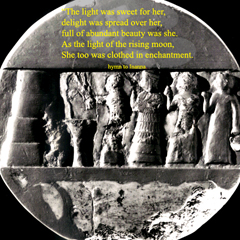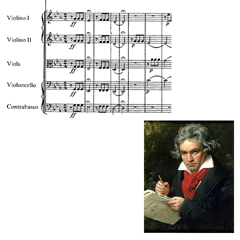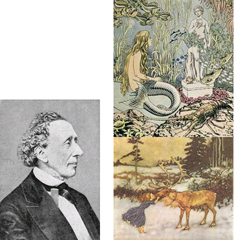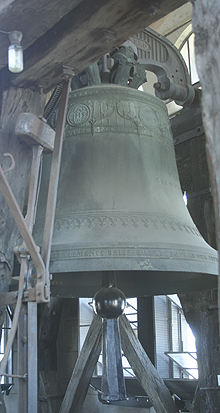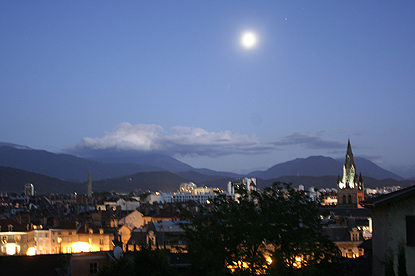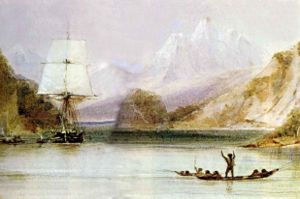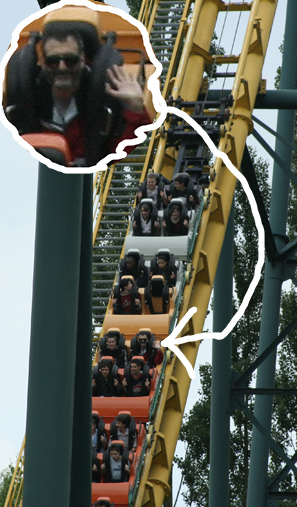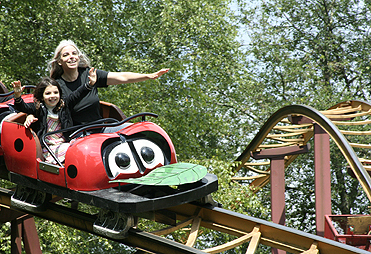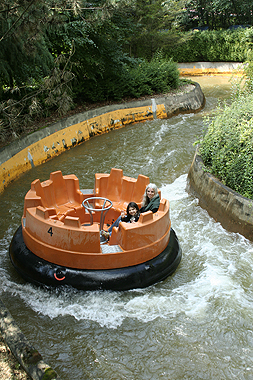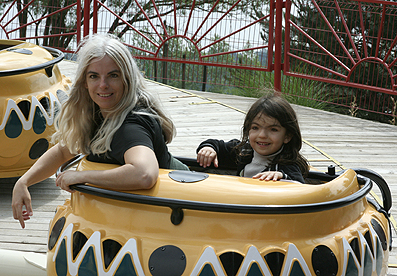What went wrong with school? It would be easier to say what went right…. not much! But let’s start with goal number 1, which was that Antonia should learn French. Maybe we started too late for her, as she was a very precocious English-speaker. Being in French-speaking environments bothered her from the age of 18 months, and she said so. Not many 18 month olds do that, I guess.
At the end of her second year in school, I was very concerned, because she still could not put together even fragmented sentences. She did not know the names of items she used everyday. She appeared not to understand simple, common sentences. She would not answer questions from adults under any circumstances. She would not play with French-speaking children, and at the age of four her social development was suffering. Meanwhile her English was pretty much that of an adult and she was friendly and outgoing to all and sundry. Some brief, intensive sessions with a speech therapist helped to build up her confidence in French, but as soon as the sessions came to an end, she regressed.
Goal 2 was that she should have a nice time. She didn’t. Not ever, really. But things got worse rather than better. At the age of 2, she would throw screaming fits at the nursery if she was dissatisfied, but she was actually rather pleased with herself when she got home. At the age of 3, she would say that she supposed she had to go to school because Mummy and Daddy had to work and were too busy to look after her. She cried every time she forgot that we would prefer her not to. When she was 4, all hell broke loose. She cried morning and night over school, and was generally depressed all the time. I spent my evenings cuddling her, and my days trying to think of ways to make things nice for her. My weekends and holidays revolved around getting her in a fit state to go back again. I think our only choices were to remove her from school or take her to a child psychologist. The latter option seems to be extremely common around here, but we chose the former.
Now, it makes sense to wonder what happened at school that was soooo terrible. What did she do there? It would appear that she sat in corners making scribbles, which was strange, because at home she was making quite complicated figurative drawings. She broke glasses or plates at every mealtime, though at home she rarely broke anything. She declined to learn anything in school, including French words for concepts she already knew like colours and numbers. But she was very demanding of intellectual stimulation at home. She learned to read English at home but apparently “did not know her letters” at school. By then, I was starting to realise that she was good at abstractions, but had to be virtually bribed to handle physical objects. Montessori didn’t seem like a very good match for her, or maybe her hatred of the school contributed to making her that way.
She also got upset on a daily basis because she got knocked around by other kids, some of whom had behavioural issues, and some of whom had behavioural issues combined with mental handicaps. She still has a scar on her face to prove that it got pretty rough in there at times. Her worst memory at this point is of the noise levels. She spent two years out of the three (the first and last), trying to hang out with the two English-speaking kids in the school who were rather older than her, and getting upset when they wanted to play with someone else. She spent the middle-year in a class with much younger children, many of whom were pre-verbal, because that appeared to the teachers to be the best class for someone who scribbled and didn’t talk yet. She was very clingy to the adults. She learned to hide in corners in the playground instead of playing, so that her physical development began to suffer too. Since she wouldn’t talk, she used clothes as a form of communication. That’s when she became very, very, interested in her appearance. She would enter the classroom with her dress held out to show the teacher, as a substitute for saying “Bonjour”.
What did we do during this time? We spent our time trying to communicate our concerns to the school, wondering most of the time whether we were crazy of they were! I think they felt the same way about us. Pretty often, we wondered whether it could even be our child they were talking about. But then, when I observed her in the school environment, I saw that she had a completely different personality from at home. I didn’t consider any of the traits I saw her developing there to be in her best interest. I am so, so glad we got her out.
And why didn’t we do it sooner? Well, I would have tried something else at the end of the first year. But the fact is that my husband and I had to come to an agreement and that was not easy. It only happened because I applied rather more pressure than I am comfortable with. He had loved the Montessori school he went to and wanted to give his child the same opportunity. It wasn’t easy for him to realise that it wasn’t suiting her the way it suited him. Also, I remember very well when I first met him that he and I commiserated over the horrible times we had at school, socially and academically. But somehow, between then and him becoming a parent, those memories evaporated into a rosy haze of happy children playing together in their own little community! And he was the one who cared deeply about us being an English-speaking household. That was obviously going to be thrown into question if we homeschooled. We looked into every possible school, before we were both convinced that it would be more of the same, or worse!
It didn’t help that I was the one on the receiving end of our daughter’s unhappiness and he wasn’t. In fact their relations were rather distant at this time. The clash between school schedule and his work schedule meant that he spent very little time with her. When he did, he took her over to play at friends’ houses and chatted with other adults. She was glued to me literally at every opportunity, and was pretty direct in expressing her preference. I know it was upsetting for him. He was the number one beneficiary of her switch to homeschooling. Within weeks, she started admitting to liking him, and now she loves us both equally. But still, somehow, homeschooling ‘feels wrong’ to him. We get to keep on doing it for as long as he is outvoted, 2 to 1!

